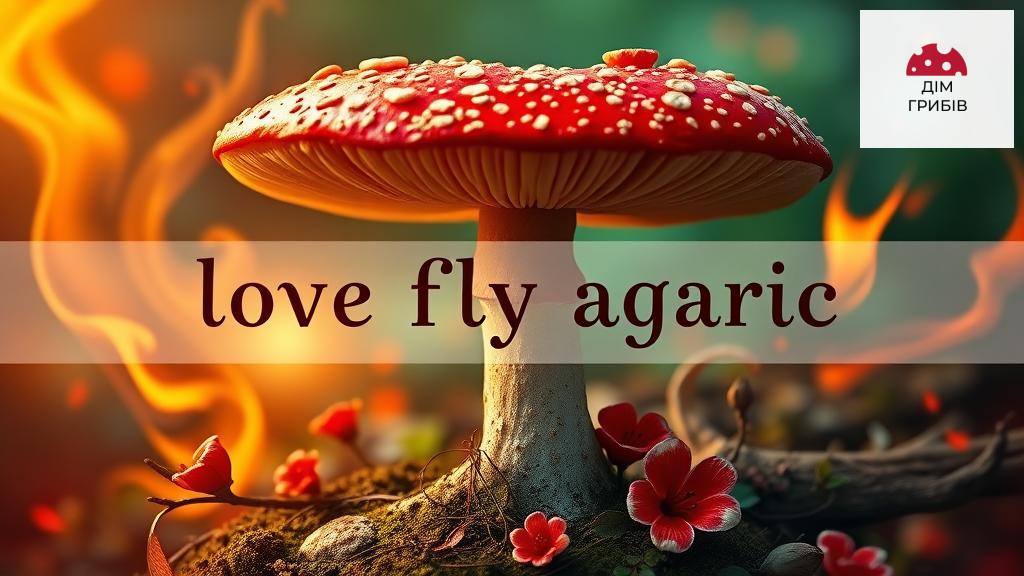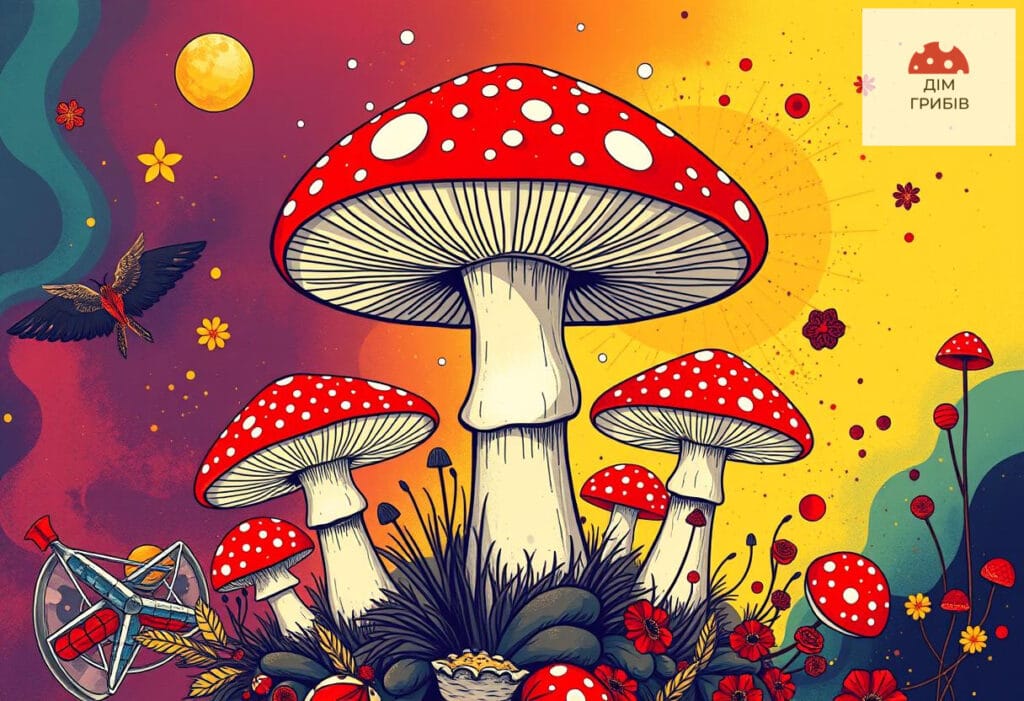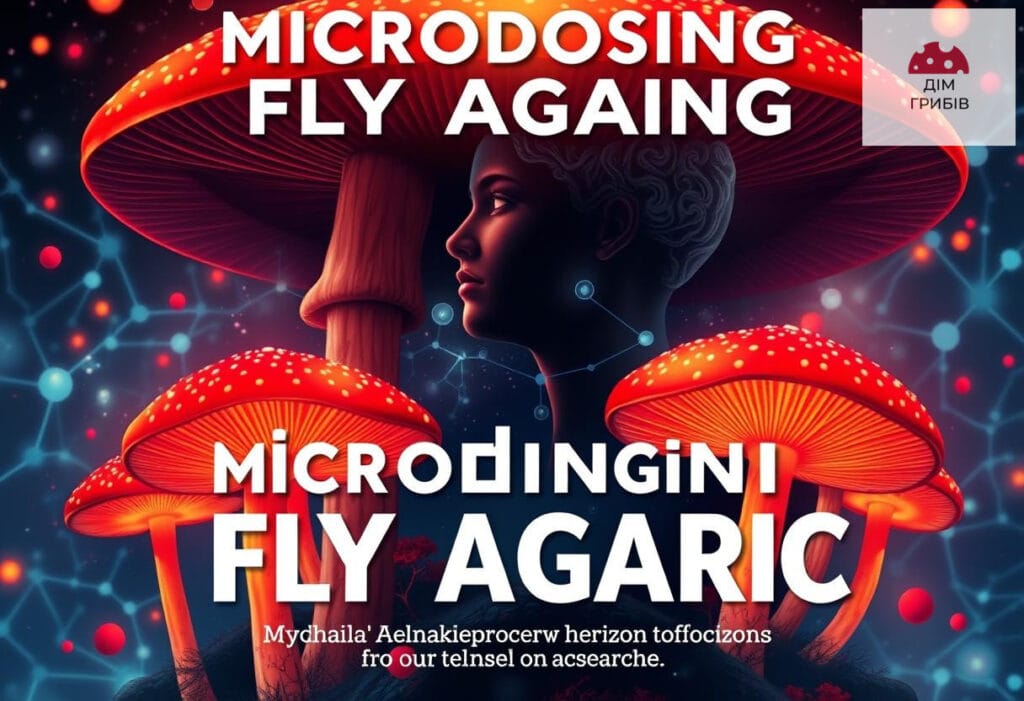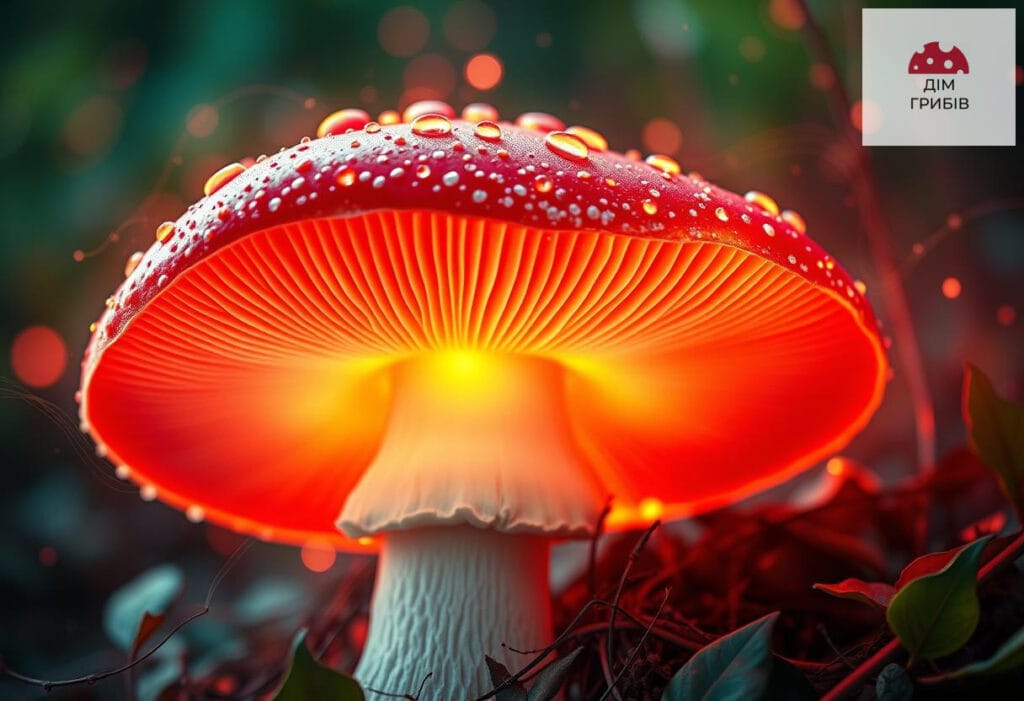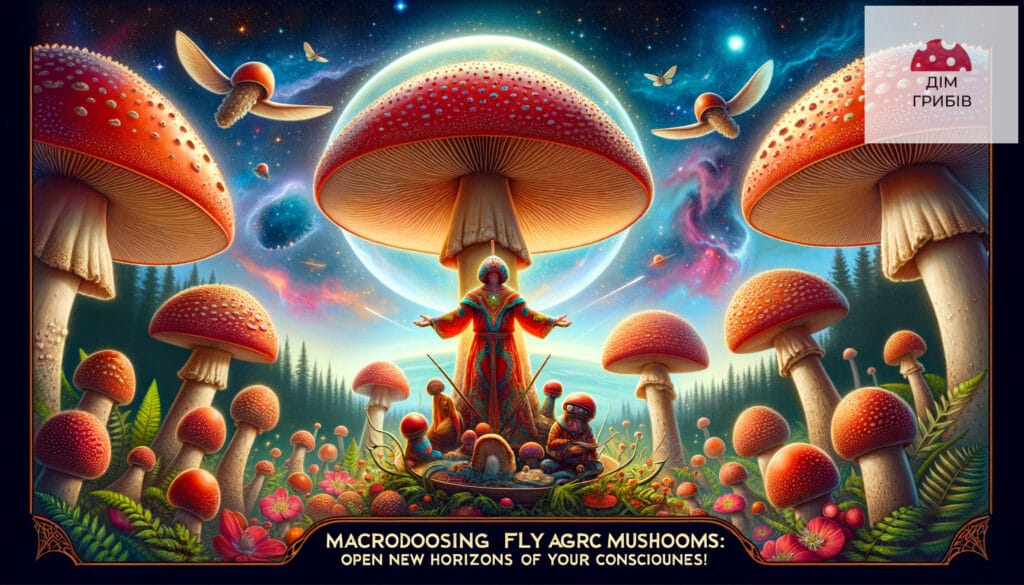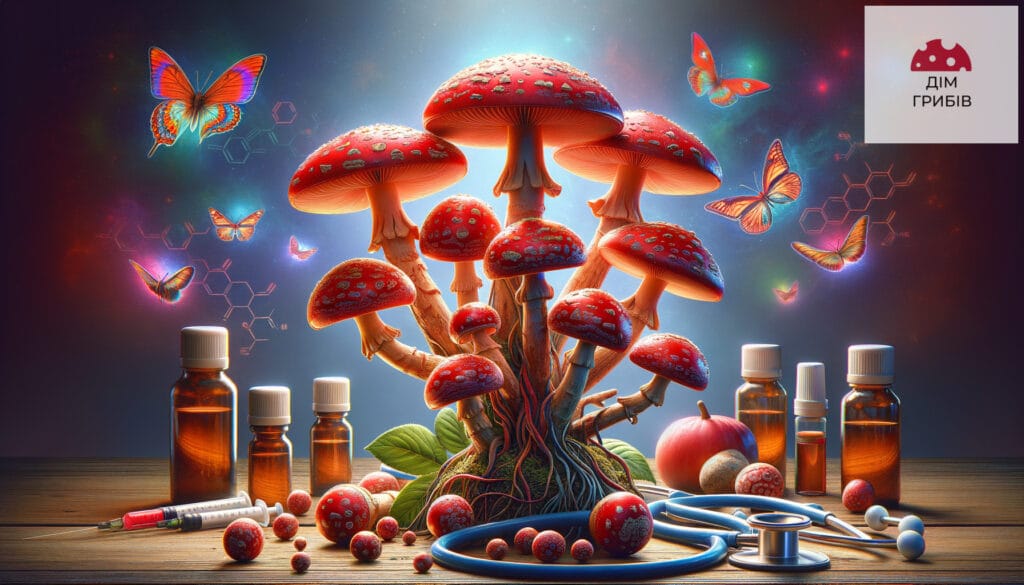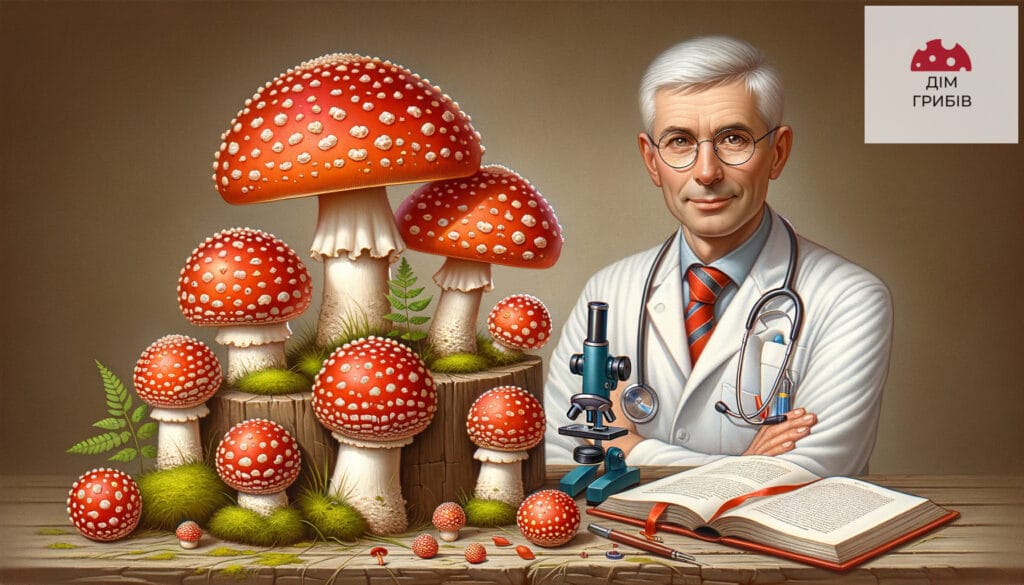Amanita consciousness changes: The impact of mushrooms on our perception of reality

Introduction to the world of fly agarics
Amanita muscaria is one of the most famous mushrooms, which arouse both noble and dangerous interest among researchers and nature lovers. Of particular interest is their ability to change consciousness in humans. Changes in consciousness of amanitas have become the subject of numerous scientific studies and personal research. For example, the red fly agaric (Amanita muscaria) contains psychoactive substances such as muscimol and ibotenic acid, which are capable of causing significant changes in the perception of reality. In this article, we will take a closer look at various aspects of amanitas, their history, impact on consciousness, use in culture and science, as well as ethical issues related to their study.
History of the use of fly agarics
Historically, fly agarics have been used in various cultures for ritual and medicinal purposes. For example, North American Indians integrated fly agarics into shamanic practices, believing that their consumption helps to connect with spirits. This unexpected effect on the psyche has attracted the attention of many researchers, who have begun to study how people's consciousness and perception change after consuming these mushrooms. The destruction of traditional knowledge in the modern world has also affected the perception of fly agarics, which are often considered only poisonous mushrooms.
The effect of fly agarics on consciousness
When investigating the mechanisms by which microscopic components of fly agarics alter consciousness, it is important to consider the molecules responsible for this. Muscimol, the main psychoactive component of fly agarics, has the ability to interact with gamma-aminobutyric acid (GABA) in the brain, leading to the development of a variety of psychoactive effects. This process is generally very complex, but several main stages of the effect can be distinguished, which will be discussed below.
Psychoactive effect
Changes in consciousness caused by fly agarics can manifest as:
- Hallucinations, which can be visual or auditory;
- Changes in the perception of time, leading to its slowing down or speeding up;
- Emotional outbursts – from euphoria to deep depression;
- Depersonalization, a feeling of detachment from one's own body;
- A blending of reality and imagination, where the boundaries between them become blurred.
Clinical trials
A study conducted in National Center for Biotechnology Information, shows that dangerous doses of fly agarics can cause serious mental disorders. According to recent clinical cases, the effects of fly agarics can be both satisfying and very dangerous, with potential long-term consequences. The table below presents the results of some of the studies on the effects of fly agarics on consciousness:
| Study title | Hallucinatory outbursts | Depressive symptoms | Duration of effect (hours) |
|---|---|---|---|
| Study 1 | 75% | 30% | 1-7 |
| Study 2 | 50% | 20% | 2-6 |
| Study 3 | 90% | 10% | 5-12 |
Changes in the consciousness of fly agarics in culture
Many cultures around the world still have traditions associated with fly agarics. For example, in Eastern Europe, fly agarics were traditionally used in medicinal practices. Doctors invented recipes based on fly agarics, considering them natural medicines, although this practice was not always safe.
Changes in the consciousness of fly agarics have not only become a topic of scientific research, but have also found their reflection in art. Artists and writers often use the image of fly agarics as a symbol of changes in the perception of reality. For example, in painting and literature, the fly agaric can be represented as a mystical element that opens the door to new dimensions.
Art and literature
Many writers have noted the influence of fly agarics on consciousness and described them in their works. For example, in the works of Leo Tolstoy and Fyodor Dostoevsky, one can find numerous allusions to the fly agaric as a means of symbolizing the struggle between mental perception and reality. These images often illustrate the complex states of the human psyche caused by excessive fascination with such substances.
Mythology and symbolism of fly agarics
In various cultures, fly agarics have acquired mythological significance. They are often identified with magical and mystical experiences. In some Native American tribes, fly agarics are considered sacred, and their use is accompanied by various rituals that include meditation and chanting, which help to connect with the spirits of nature.
Symbols of changing consciousness
Changes in the consciousness of fly agarics are reflected in symbolism. For example:
- Red: symbolizes danger and transformation;
- Hat: represents an advance from the physical world to the spiritual;
- Mushroom tears: associated with changes in consciousness and incredible experiences.
The use of fly agarics in modern medicine
Despite the dangers associated with consuming fly agarics, their components are of interest to medical science. Research suggests that certain compounds in fly agarics may have potential in treating psychiatric disorders. For example, recent studies have found that muscimol may help with insomnia and anxiety disorders. However, it is important to note that consuming fly agarics is not safe and should be done under the strict supervision of a professional.
Interaction with other drugs
The mind-altering effects of fly agarics can negatively affect people taking certain medications. Here are some recommendations to consider:
- Do not combine fly agarics with antidepressants, as this may increase the risk of serious side effects;
- Avoid drinking alcohol with fly agarics, as this can lead to dangerous interactions;
- Consult your doctor before using fly agarics if you are taking other medications.
Technologies for studying fly agarics
Modern technologies such as molecular biology and neuroscience are opening up new approaches to studying the changes in consciousness in fly agarics. Scientists are using a variety of methods, such as microscopy and electroencephalography, to investigate how these mushrooms interact with neural networks. This approach allows us to observe what changes occur in the brain after consuming fly agarics.
Application of the latest research
Researchers are trying to answer important questions such as:
- What are the mechanisms of the effect of fly agarics on the brain?
- Can the psychoactive components of fly agarics be used for therapeutic purposes?
- How can research findings improve our understanding of mental disorders?
Ethics of studying fly agarics
The study of altered consciousness in fly agarics also raises ethical issues. Researchers must adhere to ethical principles when conducting experiments to avoid potential harm to participants. The principles of safety, information transparency, and voluntariness of participation must be adhered to.
Potential risks
Improper use of fly agarics can have serious consequences:
- Injuries that may be caused by hallucinations;
- Psychoses, which can be triggered by strong psychoactive effects;
- There are unknown allergic reactions that can be life-threatening.
Prospects for future research
Research into the mind-altering properties of fly agarics is only just beginning to unfold. The coming years could bring important discoveries in this field that could potentially change our approach to the medicinal use of these mushrooms. Modern scientific progress is opening up new horizons that could lead to new therapeutic methods.
Expanding research
More attention should be paid to:
- Studying the long-term effects of consuming fly agarics;
- Development of therapeutic methods based on their psychoactive properties;
- Public education about the safety of consuming fly agarics, especially among young people.
Society and fly agarics
In Ukraine and around the world, public interest in fly agarics is growing. Many people are eager to learn about the possible benefits and risks of consuming these mushrooms. Various forums, seminars, and conferences offer platforms for knowledge exchange, research, and discussion.
Mushrooms in the world today
Today, scientific and popular strategies are helping people to form a conscious attitude towards mushrooms. It is especially important to emphasize:
- Awareness of safety and potential hazards;
- Legal responsibility for the use of psychoactive substances;
- Information about the consequences of using fly agarics, which is critically important for young people.
Final Thoughts on Amanita Muscari
Amanita muscaria has the unique ability to alter consciousness, leading to powerful psychoactive states. This phenomenon has been known for millennia, but only now is science beginning to study these mushrooms and their impact on human life in more depth. The mind-altering effects of amanita muscaria and their potential applications in medicine and culture remain a focus of research. It is important to continue the information campaign on the safe use of these mushrooms, as well as to educate future generations more in detail about their possibilities and dangers.

